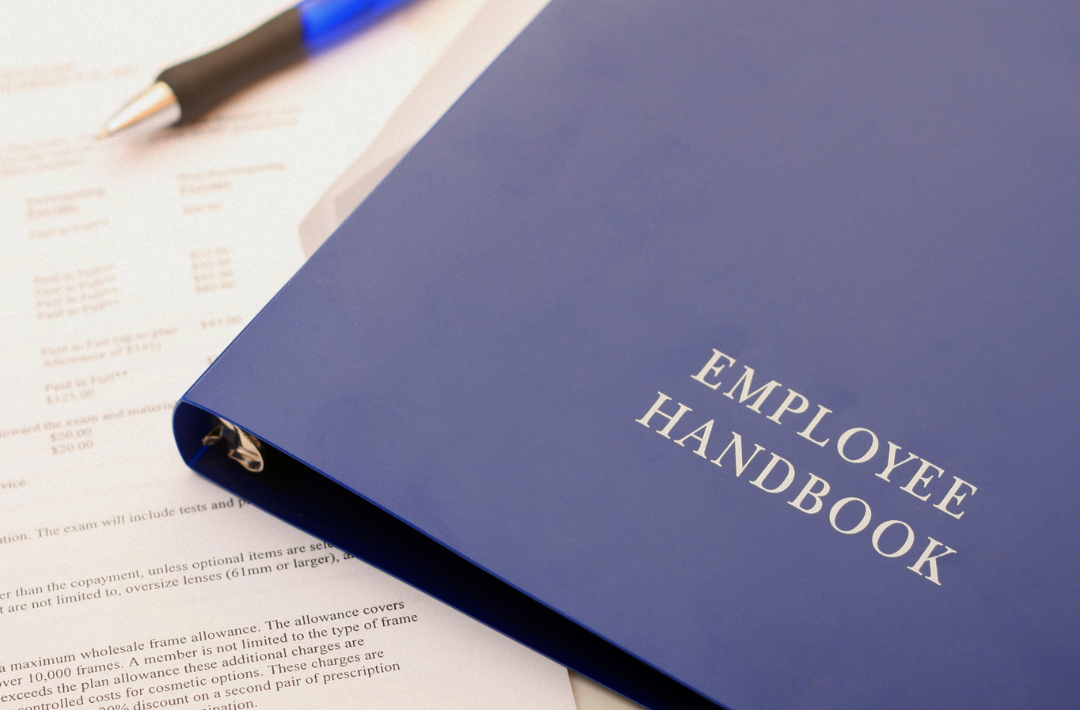A Comprehensive Guide to the California Employee Handbook
Posted on October 7, 2024

What You Need to Know About Enhancing Your HR Infrastructure Through a Comprehensive Employee Handbook
In the dynamic realm of human resources, an employee handbook is a crucial tool for effective communication between employers and employees. In California, where labor laws are particularly intricate, a comprehensive employee handbook is valuable for your HR infrastructure, facilitating clear communication and ensuring compliance with state-specific regulations. Our HR solutions & consultancy will delve into the significance of the California employee handbook, explores essential components, and discusses what should not be included to maintain its effectiveness:
Introduction to the California Employee Handbook
The California employee handbook is a vital document outlining the company’s expectations, policies, and practices. It acts as a roadmap for employees, guiding them through their roles and responsibilities while fostering a transparent workplace culture. By clearly defining company policies and procedures, the handbook minimizes misunderstandings, reduces conflicts, and helps manage expectations from the outset.
Legal Requirements and Compliance in California to Secure HR Infrastructure
California’s labor laws are among the most comprehensive in the United States, necessitating that businesses operating within the state adhere to strict guidelines. An employee handbook becomes an indispensable tool to ensure compliance with these laws, including minimum wage regulations, overtime, meal and rest breaks, and anti-discrimination measures.
Employers must also consider the California Family Rights Act (CFRA), the Private Attorneys General Act (PAGA), and other state-specific mandates when crafting their handbooks. Failure to comply with these laws can result in costly legal disputes, making it imperative for businesses to keep their policies up-to-date with the latest legislative changes— many opt to turn to an HR solutions & consultancy provider for expert assistance to create a compliant handbook.
Major Sections of a California Employee Handbook
- Company Culture and Values: The introductory section of the handbook should articulate the company’s mission, vision, and core values. This sets the tone for the organizational culture and aligns employees with the company’s objectives.
- Employment Policies:
- At-Will Employment: Clearly state that employment is at-will, meaning either party can terminate the employment relationship at any time, with or without cause.
- Equal Employment Opportunity: Reinforce the company’s commitment to non-discrimination and equal opportunity for all employees.
- Compensation and Benefits: Outline the company’s compensation structure, including salary, bonuses, and incentives. Detail the benefits package, which may include health insurance, retirement plans, and other perks, ensuring compliance with California’s wage and hour laws.
- Work Hours and Attendance: Provide guidelines on work schedules, attendance expectations, and the process for reporting absences or tardiness. Include information on meal and rest break policies as mandated by California law.
- Leave Policies:
- Sick Leave: Explain the accrual and usage of sick leave as per California’s Healthy Workplaces, Healthy Families Act.
- Family Leave: Describe eligibility and procedures for taking leave under the CFRA and other applicable laws
- Pregnancy Disability Leave (PDL): This leave provides employees with up to four months of leave for pregnancy-related conditions or childbirth, allowing for recovery and family bonding.
- Military and Military Spouse Leave: Permits eligible employees to take time off when they or their spouse is called to military service or attends deployment-related activities.
- Jury Duty and Witness Leave: Employees are entitled to take necessary time off to serve on a jury or appear as a witness in a judicial proceeding, with assurance of their employment status post-duty.
- Victims of Crime Leave: Employees who are victims of a crime or have an immediate family member who is a victim can take leave for related proceedings or to ensure their safety.
- Voting Leave: California law ensures that employees have sufficient time to vote in a statewide election, allowing for necessary time off work if they are unable to vote outside of working hours.
- Workplace Safety and Conduct: Emphasize the importance of maintaining a safe work environment by outlining safety protocols, emergency procedures, and expectations for employee conduct.
- Anti-Harassment and Discrimination Policies: Detail the company’s zero-tolerance stance on harassment and discrimination. Provide procedures for reporting and addressing complaints to ensure a respectful workplace.
- Technology and Social Media Use: Establish guidelines for the use of company technology and personal devices during work hours. Address the use of social media in a manner that protects the company’s reputation and confidentiality.
Are you ready to strengthen your HR infrastructure with an updated employee handbook? Contact our HR solutions & consultancy.
What Should Not Be Included in the Handbook
While it’s crucial to cover essential policies, some aspects should be excluded from the handbook to maintain its relevance and flexibility:
- Overly Specific Procedures: Avoid including detailed procedures that may require frequent updates. Instead, reference a separate procedures manual that can be revised as needed.
- Confidential Company Information: To protect the company’s interests, sensitive information, such as trade secrets or proprietary data, should not be disclosed in the handbook.
- Legal Jargon: Use clear, straightforward language to ensure that all employees, regardless of their background, can understand the policies.
Strengthen Your HR Infrastructure Through a Comprehensive Employee Handbook
The California employee handbook is not merely a collection of policies but a strategic tool that nurtures a positive workplace environment, reduces legal risks, and strengthens your overall HR infrastructure. Employers can foster a culture of transparency, inclusivity, and mutual respect by thoughtfully crafting a handbook that reflects the company’s values and complies with California’s unique legal landscape. This, in turn, enhances employee satisfaction and productivity, securing the foundation for organizational success.
Why Partner with an HR Solutions & Consultancy Provider to Develop or Update Your Employee Handbook?
Successfully navigating the intricate world of HR and payroll management extends far beyond mere basics. It requires strategic foresight and a proactive mindset—hallmarks of our services. For businesses eager to thrive in Orange County, partnering with EQHR Solutions will set the stage for extraordinary growth and efficiency.
Choosing EQHR Solutions as your go-to HR consultant in Los Angeles, San Diego, and Orange Counties means teaming up with an enthusiastic group that prioritizes understanding and addressing your distinct needs. We’ll provide peace of mind to your business, knowing knowledgeable professionals handle your HR and payroll functions.
Reach out to EQHR Solutions today (855-461-8808, info@eqhrsolutions.com) and discover how our tailored services can revolutionize your HR infrastructure and drive your business forward into a bright future!

 Handling Employee Investigations
Handling Employee Investigations Navigating California's AB5: A Guide to Worker Classification
Navigating California's AB5: A Guide to Worker Classification Employee Terminations in California
Employee Terminations in California







